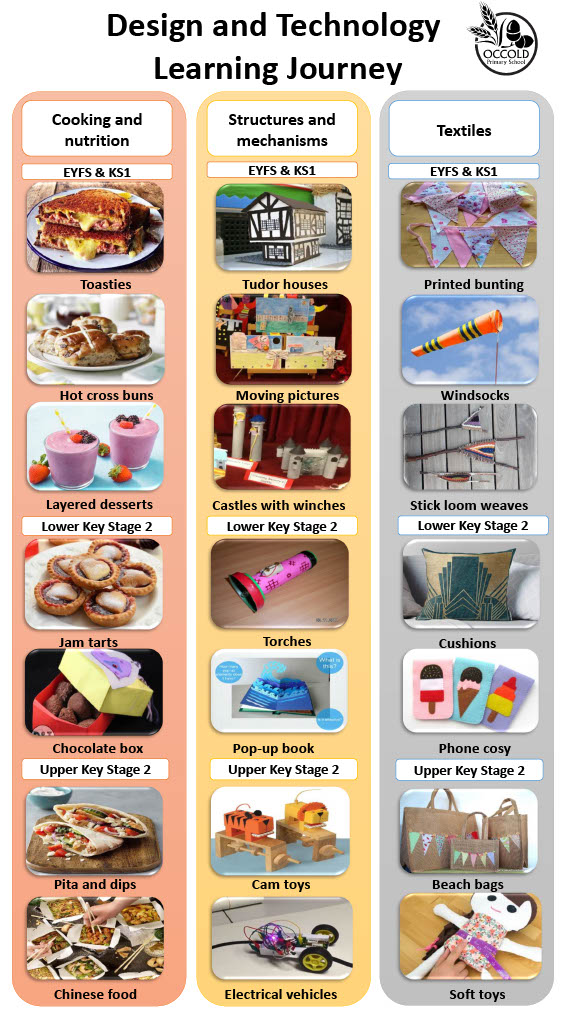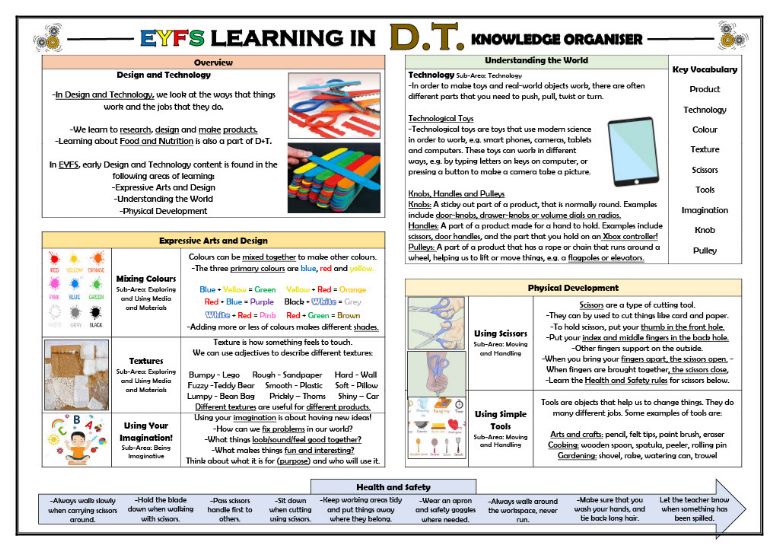Design and Technology
D&T is often one of a child’s favourite subjects. Children like making decisions for themselves and doing practical work. They love creating products they can see, touch – and even taste – for themselves. They feel proud to have done so. D&T brings learning to life. It is a motivating context for discovering literacy, mathematics, science, art, PSHE and ICT. Primary Design and Technology also provides a firm basis for later learning in the subject and a platform for developing skills in literacy and numeracy.
Children are given a range of experiences including; mechanisms, textiles, food technology, structures and electrical systems (in Key Stage 2). The DT curriculum has been structured to support children to be able to think critically and develop a more rigorous understanding of design. As children progress through the school, the DT curriculum allows them to build upon prior knowledge and skills, giving them opportunities to apply them to a new context. In order to prepare them for their future, DT teaching will also support the children to develop key learning behaviours, such as: resilience, risk taking, resourcefulness, relationships and reflection.
Design is not just what it looks like and feels like. Design is how it works
Steve Jobs, co-founder of Apple.
Details of how we approach this subject can be found in the curriculum documents below.
What is our subject intent for Design and Technology?
Key Purpose: Why is this subject important?
• Design and Technology education helps develop children’s skills knowledge in design, materials, structures, mechanisms and electrical control. It also provides contexts for children to explore broader issues such as environmental impact and sustainability as well as enterprise and economics.
• Design and Technology offers opportunities for children to develop their capability and understanding of quality in terms of both function and aesthetics. By combining their design and making skills with knowledge and understanding they learn to create products that meet particular specifications.
• Design and Technology education involves two important elements - learning about the designed and made world and how things work, and learning to design and make functional products for particular purposes and users.
• The skills learned in D&T also help with learning across the curriculum. Knowledge about the properties of materials helps in science and the practice of measuring accurately helps in maths. These skills help in information technology through the children’s use of computer control and, naturally, in art and design.
Key Principles: What are the distinctive ways of knowing, working and learning in this subject?
• Our children receive a design and technology curriculum which allows them to exercise their creativity through designing and making. It is based closely on the National Curriculum, and is supported by a well-designed sequence in skills and knowledge progression. This also ensures that there is appropriate breadth through regular encounters with the different strands such as cooking, textiles, materials and mechanisms.
• D&T is usually taught in short blocks to enable children to remain focused and to make management of materials and resources more efficient.
• The teaching of DT should follow the design, make and evaluate cycle. The design process is enhanced when rooted in real life with relevant contexts often giving meaning to the learning. For instance; activities in which children design and make 'something' for 'somebody' for 'some purpose'.
• While making, children should be given choice and a range of tools to choose freely from. To evaluate, children should be able to evaluate their own products against specified design criteria. Each of these steps should be rooted in technical knowledge and vocabulary.
Expectations: What does success look like?
By the time children leave our school they will:
• Demonstrate the ability to use time efficiently and work constructively and productively both independently on projects and with others.
• Carry out thorough research, show initiative and ask questions to develop a detailed knowledge of users’ needs.
• Show the ability to act as responsible designers and makers, working ethically, using finite materials carefully and working safely.
• Have a thorough knowledge of which tools, equipment and materials to use to make their products.
• Exhibit the ability to apply mathematical knowledge and skills accurately though measurement, geometry and statistics.
• To be able to cook and bake safely and hygienically showing an understanding of nutrition
• Have multiple experiences of using sewing and textiles.
• Use a variety of resistant and flexible materials including incorporating the use of electrical and mechanical components and mechanisms.
What do children learn about in D&T at Occold?

What are the foundations of D&T in the EYFS?

A document that maps out the progression in knowledge and skills in D&T can be found below.
